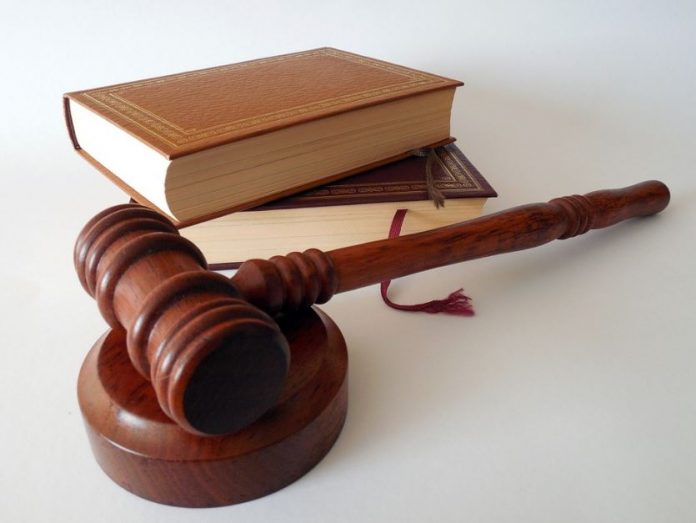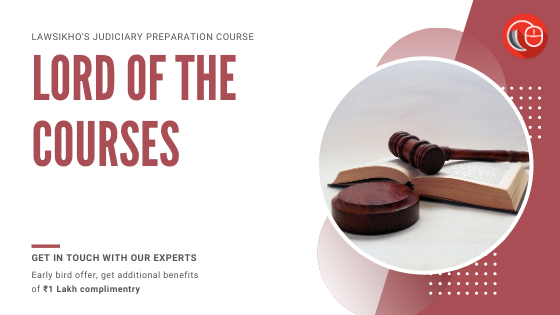This article is written by Gurpreet Singh, a student at the Faculty of Law, Delhi University. The article aims to apprise the readers about the origin of Administrative law and the administrative orders and their retractability.
Table of Contents
Introduction
The new Information Technology (IT) rules have sparked a curiosity in the minds of people that how can the government issue rules governing social media, digital media, over the top platforms without going through the parliament procedures. are about to discover a branch of law that is often illusioned under the shadow of constitutional law i.e Administrative law. Democracy functions under 3 pillars that can be broadly classified into the legislature, “the” executive, and “the” judiciary.
Unlike Presidential democracies, parliamentary democracies do not have clearly defined strict functions for the executive and the legislature, With the advent of time, the legislature couldn’t keep up with excessive demand for legislation clarifying every little piece, it had to come up with something that could rescue it from workload, so it began delegating its legislative power to the executive and as remarked by the judge of the U.S Supreme Court Judge Benjamin Cardozo that “frailty of human is to grab power”, the executive went on to be an unruly horse, therefore to rein, the executive, judges developed a leash what we know today as Administrative law.
Definition of Administrative law
- According to Wade, Administrative law is the law that controls the power of executive authorities.
- According to C.K Takwani, Administrative law is integral branch of the constitution which deals with powers and duties of administrative authorities.
- According to I.P Massey, Administrative law is that branch of public law which deals with the organization and powers of administrative and quasi-administrative agencies.
History of Administrative law
Administrative law has been described as one of the most important innovations of the twentieth century. That doesn’t imply that it was developed in that century only In France “Droit administratif” was fully developed before the twentieth century, but it gained significance in the twentieth century, There are certain factors that led to the growth of the same that are as follows:
- The state from being a minimalist went on to become a welfare state offering insurance services, implementing social security benefits, and manufacturing condoms.
- The legislature could not be roped in every time a situation arose on the ground regarding schemes or daily functioning of the government.
- Administrative law was found to be flexible. Authorities could implement it at a certain point of time and observe its impact on the ground, if it did not work, it could be altered and implemented more effectively as according to the developing circumstances.
Administrative Law in India
Administrative law took its modern form during the British raj. But it ripened when the constitution was incorporated in 1947 which established rule of law. Certain administrative authorities are mandated by the Constitution such as Public Service Commissions, Election commissions, and finance commissions, etc. The principles of Administrative law flow from our ancient roots such as the idea of dharma (Justice and fair play) being supreme. The King was expected to govern through dharma, It was considered to be above the king that today transforms to the rule of law and not of one particular individual or authority.
Relationship between Constitutional Law and Administrative Law
The relationship between the two have been defined by various scholars as follows:
According to Dr. Keith, it is logically impossible to distinguish Administrative law from constitutional law, as it is the genus and Administrative law is species.
According to professor Ivor Jennings, Administrative law deals with the organization, functions, powers, and duties of administrative authorities.
According to Hodd Philips, Constitution laws down the general principles regarding the organs of the government that are the legislature, executive, and judiciary and their functions toward the people, On the other hand, Administrative law is that part of Constitutional law that specifically deals with powers of administrative authorities.
Mechanisms of control evolved Under Administrative Law
1. Statutory Control
As the name suggests, the control is mentioned under the statutes such as rules and regulations, and if any action is performed contrary to the statute, it would be declared unconstitutional by the courts. In a famous case in England where authority had the power to purchase and operate tramways, it was duly held by the house of lords that the authority did not have the power to run omnibuses. Similarly, in another case where authority had the power to purchase land other than a park, garden, or a pleasure house, it was held unconstitutional to acquire land that was part and parcel of a park.
2. Non-Statutory Control
They include the following:
- Wednesbury principle;
- Rules of Natural Justice;
- Proportionality.
Wednesbury principle
This principle is also known as the principle of reasonableness. The actions of administrative authorities can be challenged based on reasonableness. Lord Green developed these principles in the famous case of Associated Provincial Picture House v. Wednusbury Corporation (1948). The action of the administrative authorities would be declared unconstitutional if it meets the following circumstances:
- If the action has no backing of the law;
- There is no evidence to back the action of the authority;
- The action is based on irrelevant and extraneous consideration;
- The action is so outrageous and is so unreasonable that no reasonable person in their wildest of dreams would reach that particular conclusion.
For example, a ration distribution authority comes up with criteria that only people with black hair will receive their rations, It would be considered highly outrageous and unreasonable. Such an order would be struck down using the Wednesbury principles.
As Lord Diplock in Civil Services Union v. Minister of Civil Service remarked that a decision will be struck down based on Wednesbury principles when so” outrageous in its defiance of logic or of accepted moral standards that no sensible person who had applied his mind to the question to be decided could have arrived at it.
Principle of Natural Justice
Audi Altrem Partem (Hear the Other Side).
These rules are continuously evolved and the one that is recently added is that decisions of authorities should entail reasons along with it. These rules cannot be confined in a straight jacket formula and can be relaxed and modified as per the situation in the picture Audi Aultrem Partem – The person who is affected by the order of the authority should be given a hearing In Ridge v. Baldwin it was held by the House of Lords that the opportunity of hearing should be given in administrative proceeding if the administrative order would affect the rights and liabilities of the citizens. Later the Indian Supreme Court imported this view and expressed it in State of Orissa v. Dr. Binapani De in the following words that Rules of natural justice would apply in administrative orders that have civil consequences. The simple meaning of the expression civil consequences is where rights and liabilities are affected.
Rule against bias
No man should be a judge in his cause is the culmination of the rule against bias. Decisions cannot be passed by the authorities who depict a bias against a particular decision or have vested interest in the outcome of a decision However, it may be pointed out that in Narayanappa v. State of Mysore, the Supreme Court observed that the “Minister or officer invested with the power to hear objections to a scheme is acting in his official capacity and unless there is reliable evidence to show that he is biased, his decision will not be liable to be called in question merely because the objections to the government scheme are heard by the government itself or by its officers”.
Speaking orders
The latest edition to the principle of natural justice is to provide reasons for the orders issued so that they can be challenged on their validity in the court of law. The requirement of giving reasons in orders in administrative and quasi-judicial and judicial bodies The Allahabad High Court also observed in Ramrati Singh Balika Inter College v. State of U.P:
(a) In India the judicial trend has always been to record reasons, even in administrative decisions, if such decisions affect anyone prejudicially.
(b) A quasi-judicial authority must record reasons in support of its conclusions.
(c) Insistence on the recording of reasons is meant to serve the wider principle of justice that justice must not only be done it must also appear to be done as well.
(d) Recording of reasons also operates as a valid restraint on any possible arbitrary exercise of judicial and quasi-judicial or even administrative power.
(e) Reasons reassure that discretion has been exercised by the decision-maker on relevant grounds and by disregarding extraneous considerations.
(f) Reasons have virtually become as indispensable a component of a decision-making process as observing principles of natural justice by judicial, quasi-judicial and even by administrative bodies.
(g) Reasons facilitate the process of judicial review by superior courts.
(h) The ongoing judicial trend in all countries committed to rule of law and constitutional governance is in favor of reasoned decisions based on relevant facts. This is virtually the lifeblood of judicial decision-making justifying the principle that reason is the soul of justice.
(i) Judicial or even quasi-judicial opinions these days can be as different as the judges and authorities who deliver them. All these decisions serve one common purpose which is to demonstrate by reason that the relevant factors have been objectively considered. This is important for sustaining the litigants’ faith in the justice delivery system.
(j) Insistence on reason is a requirement for both judicial accountability and transparency.
(k) If a judge or a quasi-judicial authority is not candid enough about his/her decision-making process then it is impossible to know whether the person deciding is faithful to the doctrine of precedent or to principles of incrementalism.
(l) Reasons in support of decisions must be cogent, clear, and succinct. A pretense of reasons or “rubber-stamp reasons” is not to be equated with a valid decision-making process.
(m) It cannot be doubted that transparency is the sine qua non of restraint on abuse of judicial powers. Transparency in decision-making not only makes the judges and decision-makers less prone to errors but also makes them subject to broader scrutiny.
(n) Since the requirement to record reasons emanates from the broad doctrine of fairness in decision-making, the said requirement is now virtually a component of human rights and was considered part of Strasbourg Jurisprudence. Ruiz Torija v. Spain, and Anya v. University of Oxford, wherein the Court referred to Article 6 of the European Convention of Human Rights which requires, “adequate and intelligent reasons must be given for judicial decisions”.
(o) In all common law jurisdictions judgments play a vital role in setting up precedents for the future. Therefore, for the development of law, a requirement of giving reasons for the decision is of the essence and is virtually a part of ‘due process.’
Proportionality
The latest addition to the principles of natural justice is proportionality. The explanation for this is principle boils down to to imply, means employed to achieve an end should be balanced and proportional. For example, a worker has not been regular at work in the factory, the punishment should be proportional. To dismiss the worker permanently is not considered to be balanced. The proportional approach would be to give a warning and treat absenteeism as unpaid leaves. Lord Diplock described the proportionality principle by observing that An order of authority shouldn’t use a “sledgehammer to crack a nut“. He further observed that the proportionality principle should be considered as a balancing act. Having gone through the history and the basic principles that govern Administrative law, it is time to move on to what are administrative orders and their retractability.
Administrative Orders
An order is referred to an instruction to do or abstain from doing something issued by someone who has a moral, professional, legal, or seniority authority over the person against whom the order is issued. For example, a teacher issues order to her students, a principal issues orders that are needed to conform by the teachers, similarly authorities issues order towards citizens that are known as an administrative order, For Example, an order issued by, The finance commission, the election commission, sub-divisional magistrate would be considered as an administrative order. An order issued by the judiciary and anyone authorized by the judiciary is known as a judicial order.
Retractability of orders
Now, you must be wondering whether the order once issued can be withdrawn by the authorities, The Supreme Court in Bhagwan Budha Prathmik Technical Training College Nirmali vs. State of Bihar and Ors. observed that “…a power to issue an order includes a power to withdraw the same for valid reasons.”
The Court by the above statement wanted to convey that an order can be withdrawn if due reasons are being provided for the same, It was duly noted by the court:
“If an administrative order is based under an erroneous assumption of one’s power and if it goes to the root of the matter, the authority concerned can certainly review it for valid reasons, and if that is so done, the withdrawal can not be called to be a mala fide one.”
Conclusion
Every citizen interacts with authorities in their day-to-day lives. The administrative authorities deal with day-to-day problems of the citizens and pass orders addressing the same. It is non-negotiable for the citizenry to hold them accountable in events of mischief and arbitrariness. The orders of administrative authorities can be challenged in the court of law and can also be reviewed by the authorities and withdrawn in cases of malfeasance.
Reference
LawSikho has created a telegram group for exchanging legal knowledge, referrals, and various opportunities. You can click on this link and join:
 Serato DJ Crack 2025Serato DJ PRO Crack
Serato DJ Crack 2025Serato DJ PRO Crack











 Allow notifications
Allow notifications



